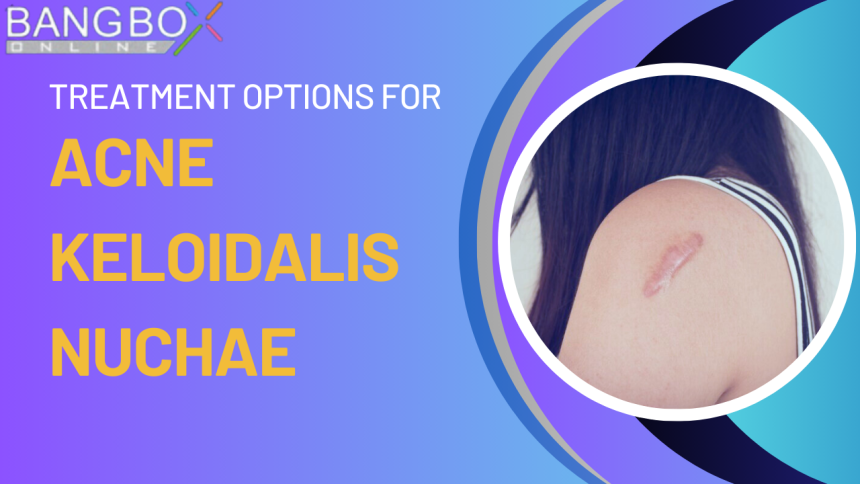
Treatment Options for Acne Keloidalis Nuchae
Most of us are fed up with the never-ending struggle against Acne Keloidalis Nuchae, so are you! We understand the impact it has on someone’s daily life. But that’s not a blind alley. There’s always a solution to a problem. All we need to do is, look for it. Therefore, we are uncovering tailored treatment strategies that are promising, and will definitely come up with positive outcomes. Surely there’s hope that we can regain a clear and comfortable neckline without more worries.
2024-01-23 23:07:30 - Laiba Rafiq
Acne Keloidalis Nuchae (AKN), also known as folliculitis keloidalis or razor bumps, is a long-lasting skin problem that happens on the back of the neck. It makes bumps that look like keloids because the hair follicles get inflamed. To take care of AKN, there are different ways that doctors can help. Here are some common ways to treat it:
· Topical Antibiotics:
Topical antibiotics, such as clindamycin or erythromycin, may be prescribed to reduce inflammation and control bacterial overgrowth. These antibiotics help prevent infection and improve the overall condition of the affected area.
· Topical Steroids:
Corticosteroid creams or ointments can be applied to the affected area to reduce inflammation, itching, and the formation of keloid scars. However, prolonged use of topical steroids should be carefully monitored to avoid side effects.
· Topical Retinoids:
Topical retinoids, such as tretinoin, may be recommended to promote cell turnover and prevent the formation of new bumps. They can help improve the texture of the skin and reduce the risk of recurrence.
· Antibacterial Washes:
Medicated cleansers containing antibacterial agents, such as benzoyl peroxide, can help control bacterial growth and reduce inflammation. Regular use can contribute to preventing flare-ups.
· Intralesional Corticosteroid Injections:
For larger or more persistent keloid-like bumps, healthcare professionals may administer corticosteroid injections directly into the lesions. This helps reduce inflammation and flatten the bumps.
· Laser Therapy:
Laser therapy, such as pulsed dye lasers or fractional lasers, may be used to address hyperpigmentation, inflammation, and scarring associated with AKN. Laser treatments can help improve the appearance of the affected area.
· Surgical Excision:
In some cases, particularly when the lesions are large or causing significant discomfort, surgical excision may be considered. This involves removing the keloid-like bumps through a minor surgical procedure.
· Cryotherapy:
Cryotherapy involves freezing the affected bumps using liquid nitrogen. This can help reduce inflammation and improve the appearance of the skin.
· Proper Hair Grooming Practices:
Adopting proper hair grooming practices, such as avoiding close shaving and using electric clippers instead of razors, can help prevent further irritation and reduce the risk of recurrence.
· Prevention and Lifestyle Changes:
Preventive measures, including wearing loose-fitting clothing and avoiding friction on the affected area, can contribute to minimizing irritation and the development of new bumps.
· Patient Education:
Educating the patient about the chronic nature of AKN, the importance of consistent treatment, and the need for long-term management is essential. Lifestyle modifications and adherence to prescribed therapies are crucial for successful outcomes.
· Regular Follow-ups:
Regular follow-up appointments with a dermatologist or healthcare professional are important to monitor progress, adjust treatment plans as needed, and address any concerns or side effects.
If someone has this skin problem called Acne Keloidalis Nuchae, it's really important for them to go see an expert dermatologist like Prof Dr Ikram Ullah Khan. Now, here's the scoop – Prof Dr Ikram Ullah Khan is gonna give your skin the eagle-eyed once-over and hatch a master plan to turn things around. No one-size-fits-all nonsense here; it's a bespoke strategy tailored to how rough your skin's got it and how your body vibes with the treatment. Hold onto your hats because the doc's not just stopping there – he's also Sherlocking around to sniff out any other pesky issues that might be tagging along. It's like a skin-saving mission with your very own superhero in the lead. So, buckle up, and let the skin-saving adventure begin!
